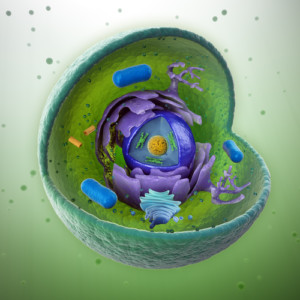The Simple truth about Oxidation and Metabolism
 The body is composed of cells. Each cell is surrounded by a cell membrane made primarily of fat (cholesterol). A healthy cell membrane is selectively permeable. Meaning it allows water and oxygen to flow freely into the cell. This keeps the cell hydrated, pH balanced and ready to produce energy. It also allows carbon dioxide and other waste products to flow freely out of the cell.
The body is composed of cells. Each cell is surrounded by a cell membrane made primarily of fat (cholesterol). A healthy cell membrane is selectively permeable. Meaning it allows water and oxygen to flow freely into the cell. This keeps the cell hydrated, pH balanced and ready to produce energy. It also allows carbon dioxide and other waste products to flow freely out of the cell.
There are proteins that are embedded into the cell membrane that regulate the transfer of minerals, hormones, vitamins, enzymes and other nutrients into and out of the cell.
This process is referred to as cellular transport.
Overall health is determined by the health of the cell membrane, without it the basic functions of the body cannot happen as healthy cells need healthy membranes and healthy cells equal healthy tissues, healthy organs and the health of the entire body.
What does wrong with cellular health?
Every day, each of the cells of the body is assaulted by damaging free radicals.
Free radicals cause cellular damage. This damage has been linked to virtually every illness or disease, as shown in countless studies. The one thing all these studies agree on is that over time free radicals begin to damage otherwise healthy organs, tissues, and cells. It can even damage DNA.
How do free radicals damage your health?
A healthy cell membrane becomes damaged by free radical oxidation. As the damage from oxidation progresses the cell membrane actually changes.
The oxidized fats (remember the cell membrane is made of fat) in the cell membrane are no longer fluid, flexible and permeable but instead become thick, sticky and impermeable.
This is similar to the fat on your kitchen exhaust fan.
The thick, sticky fats in the cell membrane are no longer able to allow the free passage of water and oxygen into the cell or allow the carbon dioxide and other waste products out of the cell.
As cells become burdened with toxic waste and even more free radicals, a greater imbalance in the natural pH occur until these cells become hopelessly dehydrated. The accumulation of acids, waste products and free radicals leads to further oxidation of the cell membranes, and so the downward cycle of oxidation continues.
The Basics of Free Radicals & Oxidation
The cells – Cells are made up of atoms. All stable atoms contain an even number of paired electrons. Free radicals occur when stable atoms lose an electron, resulting in a single, unstable, unpaired electron.
Once created, these free radicals set off a chain reaction that begins a cycle of oxidative damage. It all begins with the cell membrane.
Good News from Dr. Parker
Dr. Parker discovered this cycle can be reversed by delivering high levels of antioxidants to the cells. These antioxidants restore the cell membrane back to health. Healthy cell membranes once again allow oxygen and water to flow freely into the cell and wastes out of the cell.
This re-activates the body’s self-healing cycle.
In order to stop the oxidation cycle, the free radicals must become stable again. That single, unpaired electron must find a mate. Antioxidants have the unique ability to donate an electron, transforming the free radical back into a stable atom.
Recommended:
We like PureLife Care+ to deliver the needed oxidative vitamins that will enhance metabolism and deliver health.
Also improving your health through a balanced diet is very important.
Do you want to learn what to eat for your health and WHY you should eat that way? There is a “Eat Well Nutritional Course” what we recommend
Read about it here – Eat Well Nutritional Educational Course – Understanding Nutrition
STILL HAVE QUESTIONS? EMAIL AND GET YOUR QUESTIONS ANSWERED.
Sign up to receive the MCVitamins Newsletter!
Up-to-date info on the latest health-related news happening in the world
(available in English only)

